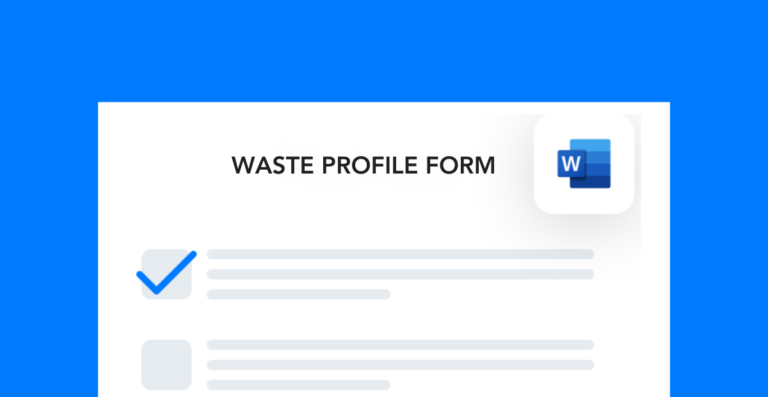Safely handling and disposing of hazardous waste materials is easier with detailed waste profiles. These documents are critical to prevent environmental, health, and safety incidents. If you plan on sending waste for disposal or processing, then you need to provide the processing facility with a waste profile.
Free form!
Download this free waste profile form template to create a standard document specific to your facility.
What is a waste profile?
A waste profile document provides detailed information regarding the composition and characteristics of specific waste materials. Therefore, the purpose of it is to aid in the disposal, handling, and shipment of waste.
Before you can write a profile, you need to collect data on the composition of your waste. Basically, this involves taking samples, sorting waste, and making qualitative observations. You may also need to reference the EPA’s waste characterization guidelines to get the information correct.
These profiles are primarily for treatment, storage, and disposal facilities (TSDFs) who process hazardous materials. Remember that a TSDF needs to have the necessary permits to handle certain types of waste, as well as an active operating license. Hence, make sure you select a provider that can handle the materials you’re generating.
What do these profiles include?
The contents of a waste profile vary depending on which regulatory requirements the facility or company falls under. But all these profiles should include these details regardless of the additional requirements:
- Name and address for the company that’s generating the waste (the generator)
- EPA ID number and contact information for the generator
- A detailed description of the waste generating process
- EPA waste codes
- Waste characteristics (composition, layering, physical state, etc.)
- Special shipping and handling instructions or considerations
Once you’ve created a waste profile, submit it to your TSDF. Specifically, this will help them process the waste in a safe and compliant manner. Also, don’t forget to update the information in your profiles over time.
Why are waste profiles necessary?
Waste profiles make the disposal process more efficient by reducing the effort required to send materials to a TSDF. Subsequently, having all the required info ahead of time cuts down on processing delays. Having these documents on hand is also essential for:
- Maintaining compliance with federal, state, and local environmental regulations
- Reducing the likelihood of environmental disasters
- Protecting workers from health hazards
- Increasing the reusability of waste materials
- Optimizing the waste disposal process
From the EPA’s perspective, requiring you to send a waste profile before sending materials allows the TSDF to verify that they’re legally able to process the waste. Additionally, it helps ensure they have the space to intake everything.
Sometimes, facilities may have a backlog and not be able to receive new hazardous materials. By requiring advance notice, the EPA is helping facilitate the efficient and safe disposal of waste for everyone.




